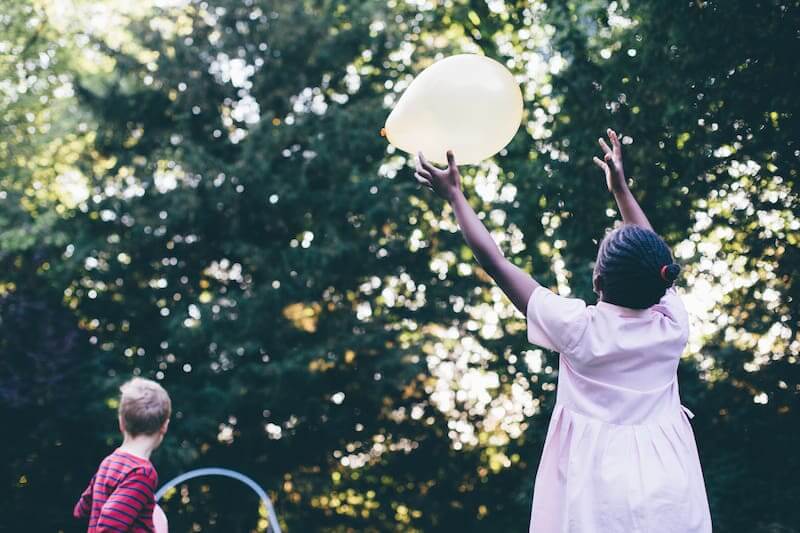Fall is in the air, new, crisp notebooks are flying off the shelves and everyone is grabbing their 64-color box of Crayolas to get ready; it’s back to school time.
But more now than ever before, it’s not just about preparing your kids with the supplies that they need when it comes to clothes and what you can buy at the store, but what kind of knowledge you’re arming them with before they leave the house. For today’s world, digital citizenship skills are a must, and it’s easier than ever to get prepared.
Digital citizenship is a big term that’s easily broken down into layman’s speak; it’s just the responsible and appropriate behavior that should be used when technology is in the picture, and it’s applicable in almost anything. From online rights to how to protect your privacy, and the privacy of your kids, it’s better to know up front what to notice and what to avoid. So what are the things you should look out for? Check out this list for 9 ways for you and your kids to responsibly engage with the modern world.
- Digital Citizenship
There’s three key skills when it comes to digital citizenship: safety, literacy, and responsibility. When it comes to safety, the biggest thing is to be aware of what you’re agreeing to when you sign up to websites and the license agreements they require for access. Whether it be a social network, your mobile device, or your favorite website, just read the copyright agreements beforehand; it will save you trouble down the road.
Next is making sure you know what web tools you’re utilizing and understanding where the information is coming from. Websites like Wikipedia allow for anyone to edit and upload information, so figure out whether you’re working with trustworthy sources. And last but not least, be responsible online. It matters how you interact with people and websites, so think before you post and use your online prowess for good.
- Online Safety
It’s important to keep your information secure, and to do that, you need to have a failsafe password, and not just one, but multiple. Don’t use three or four passwords interchangeably; that’s a great way to get hacked. Vary up your letters, your numbers, and make it easy for you to remember but hard for someone else, so add a personal element that isn’t your address, birthday, or Social Security number.
You can also be safer by sticking to the rule of the three c’s: avoid contact with strangers, consider the content of your message, and conduct yourself responsibly online.
- Online Privacy
It all comes down to being careful about what you share; knowing what and whom to share it with is key for this. Review your privacy settings when it comes to Instagram, Facebook, Twitter, and your other favorite social websites, and make sure you aren’t sharing anything that would make you feel uncomfortable for a stranger to know.
Nowadays it’s as easy as a Google search to learn about someone, so make sure what shows up is something you’re fine with the world knowing. If it’s not, it’s time to review your settings.
- Online Rights
You have rights online just like you have rights in reality; just because it’s virtual doesn’t mean you don’t own your image, your name, and your personal information. If your information isn’t protected or secured as you would like, contact a site administrator or tell you friend to take down that old photo—it’s that easy.
- Online Responsibilities
It’s really easy to make a mistake online and think it doesn’t count in the real world; after all, it’s all virtual, right? But the truth is, online responsibility is applying the same codes of conduct and standards of behavior online as you do in real life because it makes for a nicer online world. Report problems you see online just like you would in real life. Don’t antagonize people in comments or photos, but also stand up for yourself when the need arises. And if you see something that’s inappropriate and don’t know what to do, do a web search to find our next steps—it may be something or nothing, but better safe than sorry.
- Digital & Media Literacy
Digital and media literacy is all tied into how you manage information you interact with online; don’t trust everything you come across. With so much information and content instantly popping up on your computer, there’s ample opportunity to come across something that is misleading, false, or insecure. Learn to recognize the sites that are worth your time and the one’s that aren’t and you’ll be able to navigate the online world more successfully.
- Digital Footprint
It’s easy to say that when you step in a mud puddle, every step after that is a print of where you’ve been, and so it is with your digital footprint as well. From the things that you search to the sites you frequent most often, the internet is taking tabs. To keep track of these things, make sure you’re posting positively, avoiding giving out too much information, and updating your online profiles regularly so you can control what you’re sharing and not sharing.
- Power For Good
It’s easy to do good things online; from sharing someone’s success story to complimenting a friends picture, it all comes down to spreading love rather than hate. And when it comes to the internet the possibilities are endless, so don’t stop at saying Happy Birthday to a friend every once in awhile, make a point to connect. Don’t just do research on companies that are giving back, but invest in their projects by donating online or lending a helping hand.
- Unplug
While modern technology really helps us throughout our days, it’s equally important to make sure you are spending time away from all the screens and interacting with the people and the world around you. Make a plan to step away from the devices and stick to it, whether it be having a “no phone” rule at the table, or establishing a no texting zone in the house, it’s good to set boundaries and to keep them, because despite being amazing tools, it’s always great to unplug and just relax.
When it comes to preparing your kids, just sit down and discuss with them what they think are good practices for staying safe online, or how they feel they’re being treated in their own virtual worlds; the first step to teaching them good practices is to acknowledge that there’s a better way for them to use modern technology. Start with questions like: How do you feel when you’re online? Are you being bullied? What sort of websites do you like the most? From there you’ll get into how they interact with the digital world, and you’ll be able to to help them manage it better. Safe practices mean safe kids, it all just comes down to getting the information out there.

